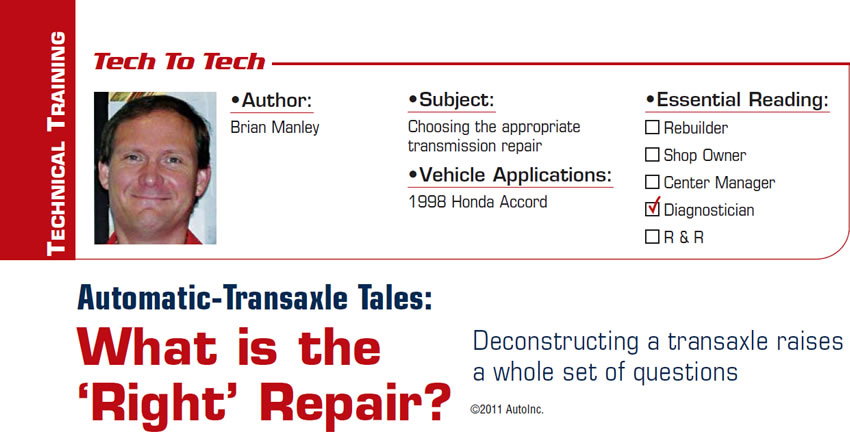No-Start after Fender Bender
When the ’96 Lexus was dropped at our door, it came with a simple concern: “Vehicle stopped running following accident. Airbags have deployed.” A trip to the ES300 confirmed that both airbags had indeed “popped” (Figure 1). With just over 100K on its odometer, and needing two airbags and a new front bumper, I wondered if this vehicle was worth saving. My customer was motivated to have us dig into the diagnosis, so we accepted the challenge.
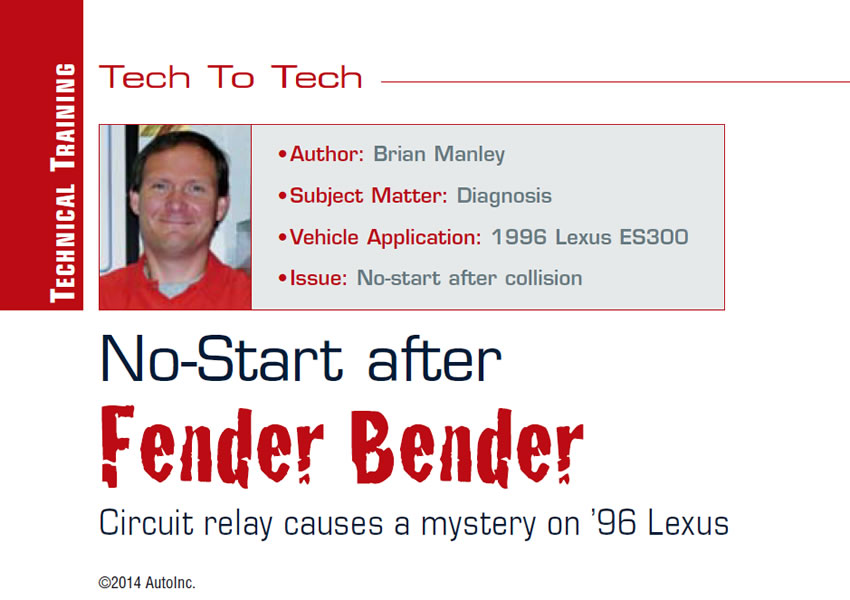
Technician Turned Sleuth
How often have you accepted a repair knowing that others have been involved? How often are you required to channel your inner Sherlock Holmes? Two recent repair jobs led me to unusual conclusions.
One of my customers brought in a Nissan Sentra that had a habit of blowing its interior-lamp fuse. She would replace the fuse, and then it could fail within hours, or it could take days before it popped.
Most of the time when I see blown fuses, there is a direct connection to either rubbed factory harnesses that aren’t routed with enough free play – sometimes accompanied by a TSB – or it is due to the intervention of human hands during a repair or modification, such as an aftermarket installation.
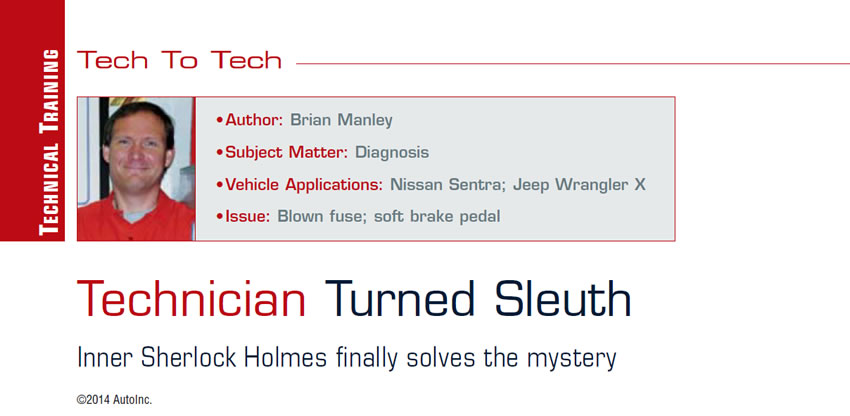
Power of Collective Wisdom Solves ‘Fretting Corrosion’
Now, at this stage I believed that my customer was a victim of either high-mileage fretting corrosion or high-mileage fracturing of cold-solder joints. Either way, “smacking” was the big clue that can temporarily solve either of these issues, and I believed I had a good shot at repairing my customer’s minivan, even though I could not get it to act up. At this point in my detective work, I felt like an attorney attempting to prosecute a murder case without the benefit of a murder weapon – or a body. Luckily, there are precedents for convicting when there is no body, just as you and I have repaired a vehicle or two without locating a tangible root cause.
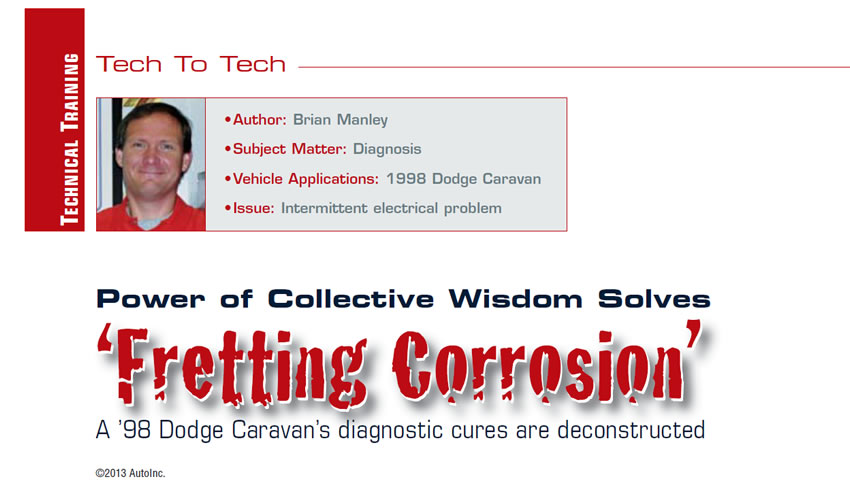
Dead Cylinder Leads to a Broken Relationship
We originally test-drove the vehicle to verify the shaking and lack of power, and we also heard a light ticking when it was idling and at lower engine speed. Even though this Escort far exceeded the average life expectancy of today’s vehicle, with gas currently at $3.50 per gallon, my customer dearly wanted to keep this little Ford on the road.
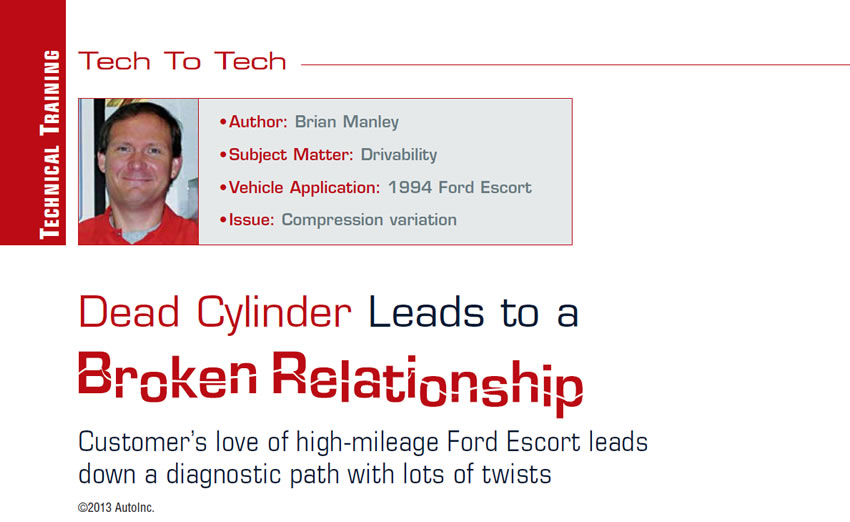
Becoming More Mobile, Diagnostically Speaking
I have enjoyed reading the Generationally Speaking column in this very magazine (AutoInc.), and I noticed an interesting trend. It seems there is a thread connecting the Generation Y’ers, Gen X’ers and Baby Boomers: They all seem to be unable to live without their smart phones. I can understand why! A Baby Boomer myself, I have found my foray into the iPad and iPhone world truly exciting, and there are many reasons why I am happy I decided to purchase these two powerful, portable devices.
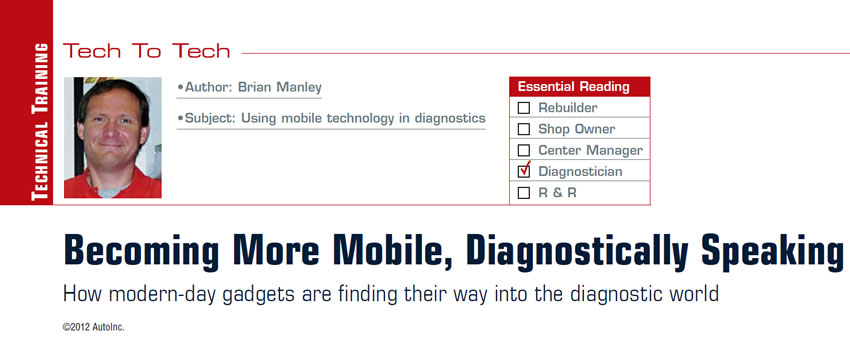
A One-of-a-Kind Saab No-Start
How often do you get to say this as a technician: “I have never seen this before”?
Such a day occurred for me recently when my customer had his 1991 Saab 9000 towed to our shop with a no-start complaint. Little did I know what I was in for! Spoiler alert: Do not look at the last two pictures yet; try to figure this one out first.
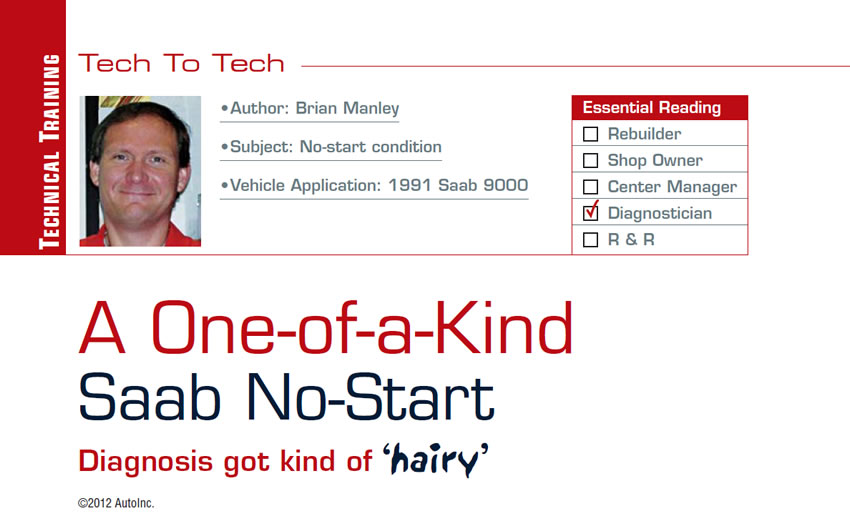
Tests Confirm Uneasy Feeling about Diagnosis
When was the last time you had a customer bring you their vehicle – along with a part – and ask you to install it? On occasion, I have a customer ask me to do just that, and it is often large, used and costly to purchase new – such as an engine, transmission or differential. This was the case recently when my friend Jim had his 2002 Pontiac Grand Prix GT towed to our shop; he also had a used automatic transaxle delivered from a local, reputable used-parts supplier.
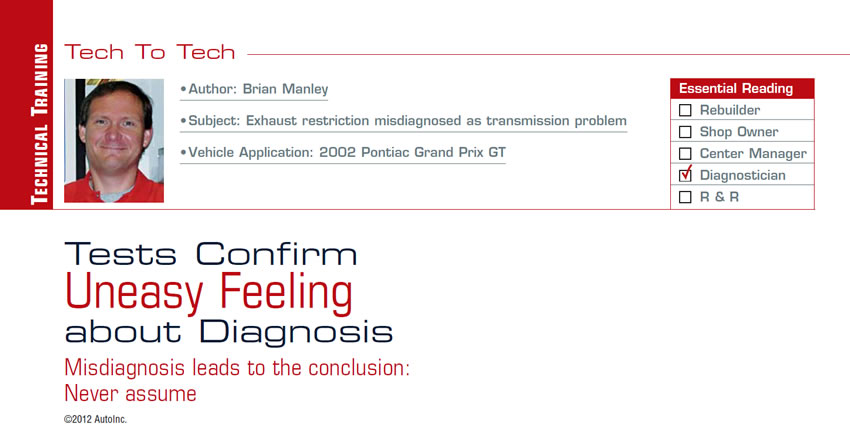
Issues Pop Up During Emissions Check
How often have you had a customer with a high-mileage, 20-year-old vehicle say, “I just need it to last one more year”? With the average age of vehicles on the road more than 10 years, I am seeing more “20-somethings” coming in my bay for TLC.
A customer recently brought in her 1992 Oldsmobile Cutlass with a 3.8-liter engine, 138,000 miles and a failed emission report. In our metro Denver area, we all must pass our centralized emission test – or we cannot renew our license plates.

Bitter Cold: Sometimes It’s the Root Cause, Sometimes It’s Not
Here in Denver, when the snow flies and the mercury plummets, we all like to press “4WD” on our dashboards and blast out into the blizzard. When our rigs stay in “2WD” and slide into the gutter – that’s when I get the phone calls. The following two customers called me the same morning recently, and we came to two very different conclusions after diagnosing their inoperative four-wheel-drive (4WD) systems.
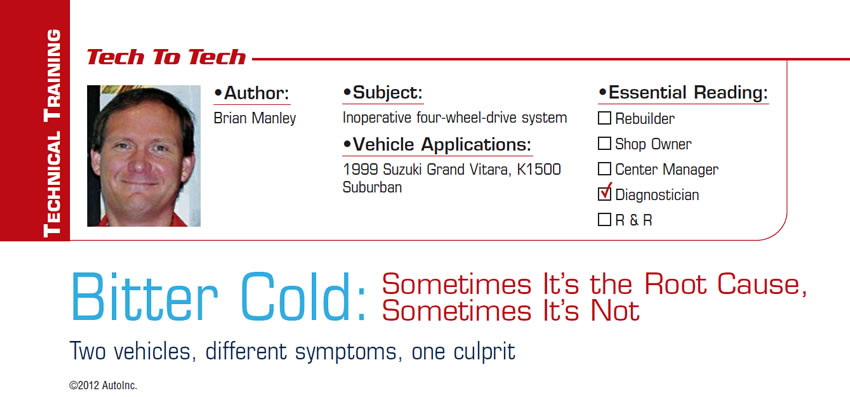
Taking it to the Track, Part II: Our Charger Runs the Quarter Mile
In my previous installment (November 2011), I profiled our progress of “hot-rodding” a part-time sheriff’s car for our local one-fourth-mile drag strip, Bandimere Speedway.
Our speedway hosts a program called “Take it to the Track,” an initiative aimed at getting young drag racers off the street and onto a safer venue, and this 2006 Dodge Charger just needed its exhaust system installed before we could start the engine.
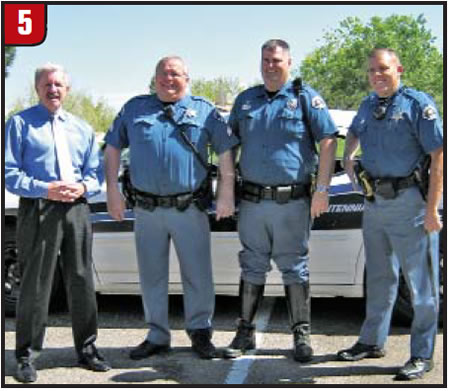
Shop Transforms ’06 Dodge Charger into Hot Rod for Greater Calling
The sheriff wanted to be more competitive with his Charger so he could win more than one third of his races. The Charger – here in Metro Denver – ran the quarter mile in 15.9 seconds and averaged 88 mph with the stock 5.7 Liter Hemi engine, automatic transmission and 2.80 differential gears.
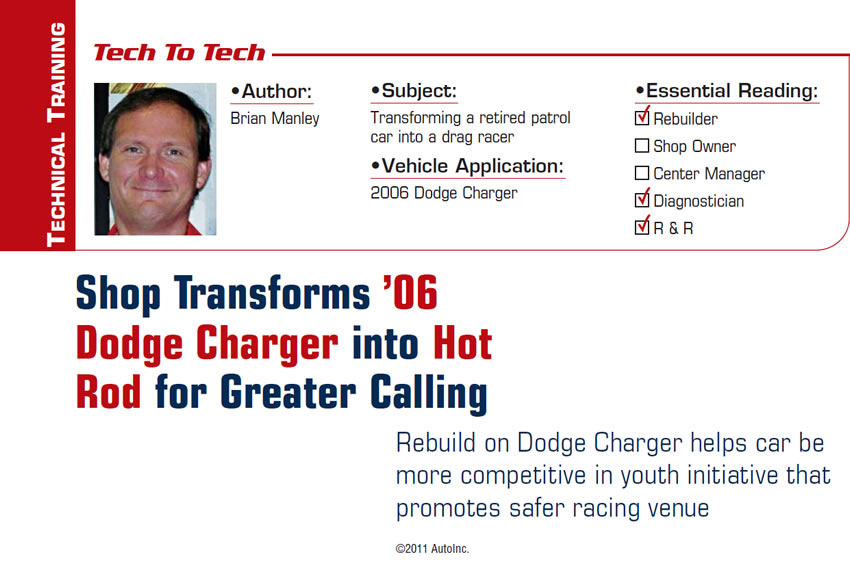
Automatic-Transaxle Tales: What is the ‘Right’ Repair?
When a 1998 Honda Accord rolled into my shop with a customer concern of “poor shifting,” I thought a moment before saying “Yes.” I began with a fluid check and a test drive, finding that the shifting was indeed “poor.” I followed the test drive with a thorough visual inspection above and below the vehicle (Figure 1), and I wondered just how many possible causes could exist for this shifting issue.
